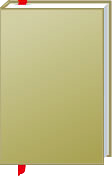

 |

|

The average rating for Chaucer and the craft of fiction based on 2 reviews is 3 stars.
Review # 1 was written on 2010-01-19 00:00:00 Tim Hawes Tim HawesAnother book that could have been my dissertation. Time to keep narrowing. |
Review # 2 was written on 2016-10-20 00:00:00 Kelly Whisnant Kelly WhisnantThis book is an edition of the "Old English elegies": the wanderer, seafarer, riming poem, deor, wulf and eadwacer, wife's lament, reignation, the husband's message and ruin it also has riddle 60 which may or may not be connected to the husband's message. Although there are no translations offered, there is a lengthy introduction on each of the texts, and at the end a conclusion (of sorts) which deals with the fraught problems of genre and source, (the author here looks at Latin, Old Norse and "Old Welsh" analogues and concludes that although they all influenced the Old English, only the Latin may have had a limited direct relevance to one of the poems (the riming poem). The only one of those I am really qualified to critique is the section on old welsh which I found found unsatisfactuary in some regards (the whole idea of conquered-conquerer is surely passé?) and disagreed with in other respects (the idea that claf abercuawg is more about physical ailments than mental ones), and the audacity to talk about an "old welsh" elegy tradition at all. Otherwise the book was fairly good, even if its main purpose was to sum up scholarship rather than add anything (other than perhaps the defence of the term genre applied to these poems). Three quotes: (on the origin of the wanderer compared to the seafarer) "the Wanderer has no particularly early forms, and its vocabulary shows evidence of Norse influence and an Anglian, possibly Northumbrian background, whereas The Seafarer contains one or two early or Mercian usages, no Scandinavianisms, and a lower proportion of Anglian words. Conceptually, too, there are significant differences between The Wanderer and The Seafarer. The latter poem presents an asceticism deliberately sought in order to win wisdom - and grace, but The Wanderer describes a solitude imposed by fate not choice (the death of lord and (p33) friends, lines 9b-10b and22-23a); only after the meditation associated with endurance and with the contemplation of loss does a man become wise (lines 64-65 and 88-91) - and realize the need to seek grace. Not until the end of the poem is the active pursuit of grace mentioned (lines 114b-15); at the beginning , the solitary Wanderer has received it many a time (line 1), but has not yet learned to search for it. In a broad sense, the Wanderer is a pilgrim from this world to the next, but he doews not deliberately set out upon this spiritual journey like the speakers in The Seafarer and Resignation, and the sea-voyage has not the central symbolic significance which it posseses in these poems. (Wulf and Eadwacer taken literally?) P47 "in the light of these considerations [seriousness, psychological situation focus], it seems reasonable to treat Wulf and Eadwacer as a lament, of a deliberately enigmatic kind. The use of animal words like wulf and hwelp contributes in large part ot the poems enigmaticism - and it resembles the personification of the non-human in the Riddles. If the poem is neither a riddle nor a joke, it is hard to believe that the characters really are animals. Peter Orton (1985, 223-58) believes that we have here an anthropomorphic piece about wolves, but he is at a loss to explain the purpose of such a poem (p256), I have argued elsewhere (Klinck 1987a) that not only wulf and hwelp, but dogode ("followed like a dog"? see Textual notes on line 9), bogum ("shoulders") , and tosliteδ ("tears apart") are also animal terms, that the language is markedly disparaging, and that it colours though it does not negate the grief expressed in lines 13-14 (p.11). My analyis of lac, "gift", "sacrifice?" and aƥecgan, "take, consume," links these words also with the animal imagery (Klinck, 1987a, 4-6). I believe that this explanation fits in with the nature of the poem as an erotic "woman's song," like The Wife's Lament, expressing intense and ambivalent feelings. This type of intense animal imagery (p48) would be less appropriate to a mother's lament for her son. Thus Wulf and Eadwacer should be understood "as a love poem, essentially serious, though infused with irony… -- a poem whose lamenting voice acqwuires a cutting edge from its distinctive use of 'brutal' imagery" (Klinck 1987a, 13). (comparing cuckoos in Old English and "Old" Welsh) The contrast is noteworthy in the way the two traditions treat the cuckoo motif, which Sieper through must be a Celtic loan (see noteon Sea 53-55a). In The Seafarer and The Husband's Message the cuckoo's call in the springtime corresponds to the heart's impulse; in Claf Abercuawg the voices of the spring cuckoos are instinct with exuberant life - precisely the opposite of the speakers depressed and morbid state. Only in Resignation 105-8a, where the speaker juxtaposes his miserable self with a flourishing tree, does the technique characteristic of Welsh verse appear. |
CAN'T FIND WHAT YOU'RE LOOKING FOR? CLICK HERE!!!